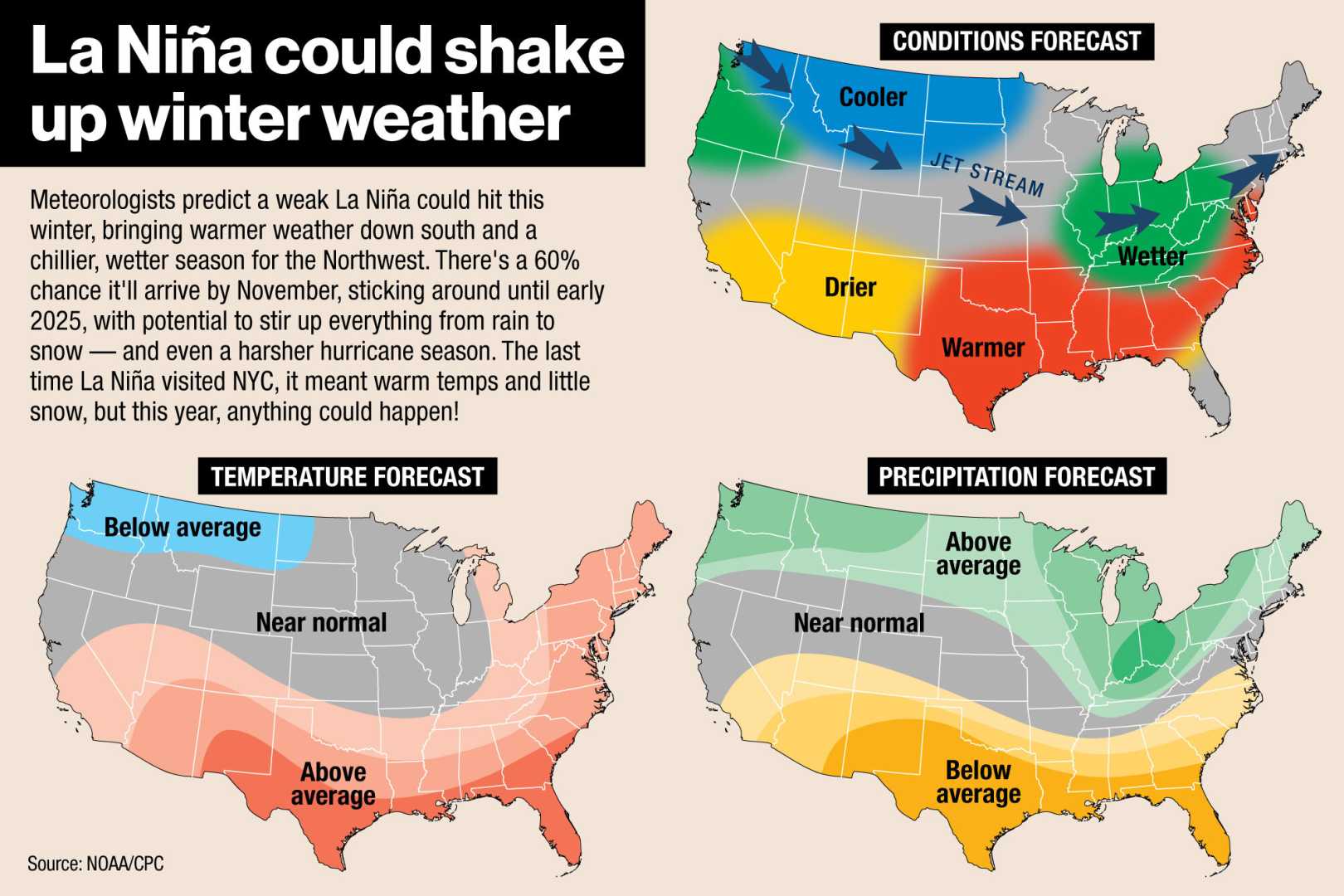News
La Nina Expected to Influence U.S. Winter Weather Patterns

A new winter weather outlook has been released, predicting notable changes in weather patterns across the United States due to an anticipated La Nina event. The U.S. Winter Outlook, provided by the National Oceanic and Atmospheric Administration‘s (NOAA) Climate Prediction Center, outlines expected conditions from December 2024 to February 2025.
NOAA forecasts suggest wetter-than-average conditions for the northern parts of the United States, including the Pacific Northwest and the Great Lakes region. Similarly, northern and western areas of Alaska are also expected to experience heightened precipitation. Conversely, drier conditions are predicted for the Four Corners region in the southwestern U.S., the Southeast, Gulf Coast, and lower mid-Atlantic states.
Michael Morgan, Ph.D., NOAA’s assistant secretary of commerce for observation and prediction, emphasized the agency’s recent $100 million investment in high-performance computing to improve weather, climate, and ocean predictions. “Understanding our climate system is essential for making longer-term predictions like the Winter Seasonal Outlook, which provides vital information for many of our partners and the public,” stated Morgan.
Jon Gottschalck, chief of the Operational Prediction Branch at the Climate Prediction Center, noted that the emerging La Nina is expected to influence winter precipitation patterns. “This winter, an emerging La Nina is anticipated to influence the upcoming winter patterns, especially our precipitation predictions,” Gottschalck remarked.
La Nina conditions usually result in a more northerly storm track during winter months, which often leads to warmer and drier conditions for the southern parts of the country. As per NOAA forecasts, drought conditions are likely to persist and intensify in the central and southern Plains.
According to Brad Pugh, operational drought lead with NOAA’s Climate Prediction Center, over a quarter of the continental U.S. is currently experiencing at least a moderate drought. “The winter precipitation outlook does not bode well for widespread relief,” Pugh warned.
The Climate Prediction Center updates its three-month outlook monthly, with the next update due on November 21. These seasonal outlooks are crucial for helping communities prepare for upcoming weather changes and mitigating their impact on lives and livelihoods.
Climate scientist Michelle L’Heureux from NOAA highlighted the challenge in predicting snowfall due to its dependency on specific storm tracks. “In the U.S., the Northeast and Ohio Valley typically experience wetter conditions due to the position of the jet stream during La Nina,” explained L’Heureux. The wavier jet stream can also lead to more frequent cold outbreaks, mainly in the central U.S.
The global climate cycle known as El Nino-Southern Oscillation, which includes both El Nino and La Nina phases, involves adjustments in wind and ocean temperatures across the Pacific. Ben Cook, a climate scientist at NASA, noted the recurrence of La Nina events could stress regions already facing drought, such as East Africa.












